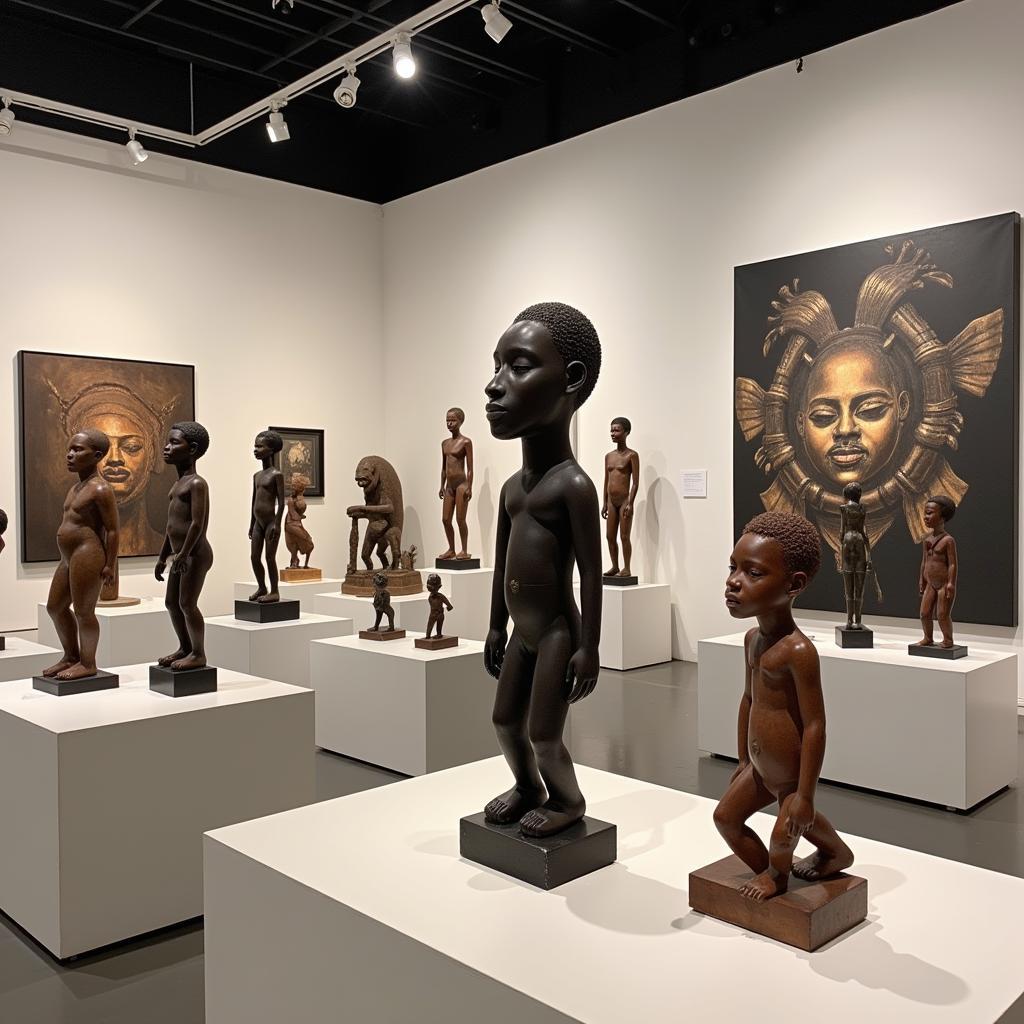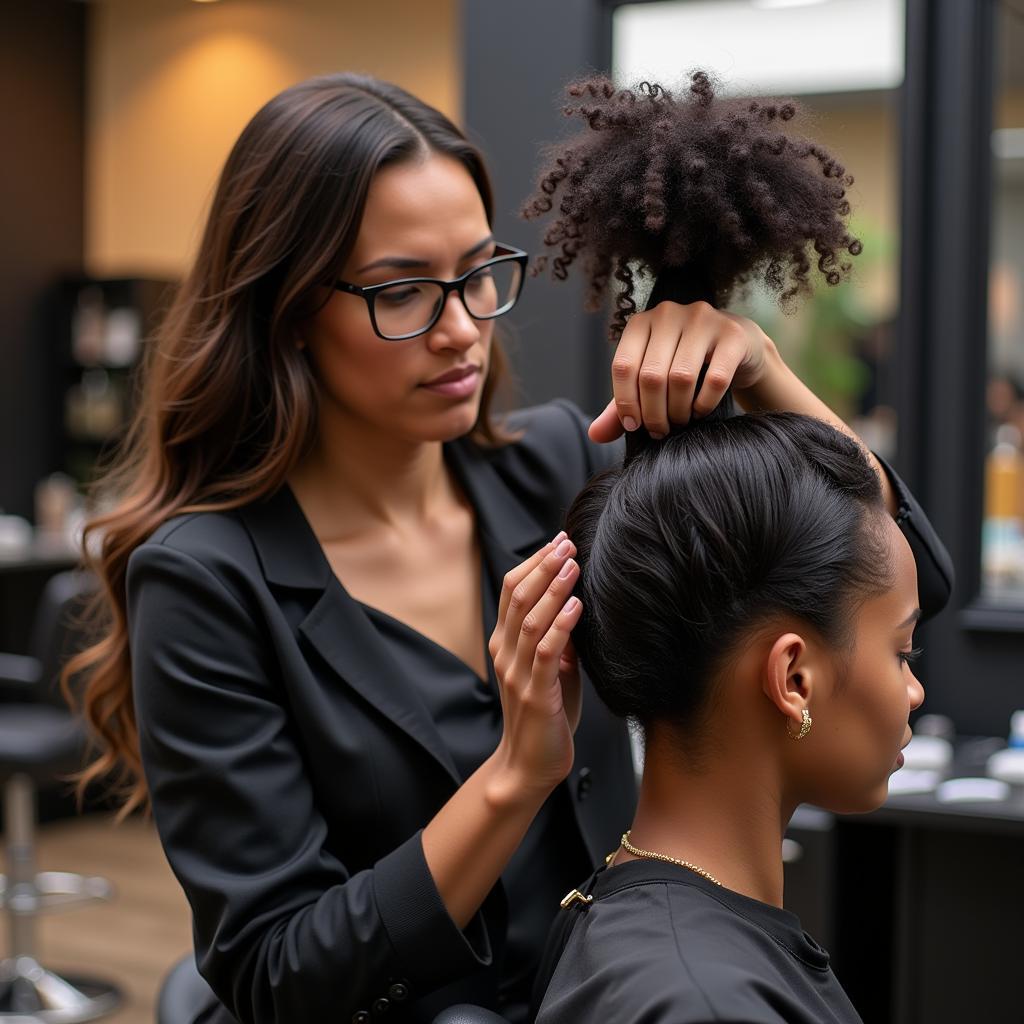Exploring the World of African Statues
African Statues have captivated art enthusiasts and historians for centuries. From ancient civilizations to contemporary artists, these sculptures offer a glimpse into the rich cultural heritage and diverse artistic traditions of the African continent. african animal statues depict the power and beauty of the natural world.
The Significance of African Statues in Ritual and Ceremony
African statues hold deep symbolic meaning, often representing deities, ancestors, or important figures within a community. They play a vital role in rituals and ceremonies, serving as conduits between the physical and spiritual realms. Many statues are used in initiation rites, festivals, and healing practices. For example, some communities use african art statues in ceremonies to honor their ancestors and seek their guidance.
These powerful sculptures are not merely decorative objects but active participants in the cultural and spiritual life of the people. Their creation involves meticulous craftsmanship and a deep understanding of the materials used, which range from wood and stone to bronze and ivory.
Materials and Techniques in African Statue Creation
The diversity of materials used in creating African statues reflects the continent’s vast natural resources and the ingenuity of its artists. Wood, readily available and easily carved, is a common choice, particularly for figures representing ancestors or spirits. Stone, a symbol of permanence and strength, is often used for larger, more monumental works. african giraffe statue carved from wood showcases the intricate craftsmanship of African artists.
Bronze casting, a technique mastered by several African cultures, allows for greater detail and complexity in the sculptures. Ivory, although now subject to strict regulations due to conservation concerns, was historically used for intricate and highly valued objects. The specific techniques and materials used often vary by region and ethnic group, contributing to the rich tapestry of African art.
What are some famous examples of African statues?
Famous examples of African statues include the Nok terracotta figures from Nigeria, renowned for their elongated forms and expressive features. The Benin bronzes, looted from the Kingdom of Benin in the 19th century, are powerful examples of royal art. The wooden masks and figures of the Dogon people of Mali are characterized by their stylized forms and geometric designs. african bronze statues are recognized worldwide for their artistry and historical significance.
“The power of African statues lies not just in their aesthetic beauty but in the stories they tell and the connections they embody,” says Dr. Adebayo Olabiyi, a renowned art historian specializing in African art.
The Impact of Colonization and Globalization on African Statue Art
Colonization had a profound impact on African art, disrupting traditional artistic practices and leading to the looting and dispersal of countless artifacts. However, African artists have continued to create and innovate, adapting their traditions to the changing world. Globalization has brought both challenges and opportunities, creating new markets and audiences for African art while also raising concerns about cultural appropriation and authenticity. african floor statues can be incorporated into modern interior designs.
“Contemporary African artists are reclaiming their narratives and using their art to address issues of identity, history, and social justice,” adds Dr. Olabiyi. “Their work reflects the dynamism and resilience of African culture in the face of globalization.”
 Contemporary African statue art
Contemporary African statue art
Conclusion
African statues offer a profound window into the diverse cultures, artistic traditions, and spiritual beliefs of the African continent. From ancient rituals to contemporary expressions, these sculptures continue to captivate and inspire, reminding us of the enduring power of art to connect us to the past, present, and future. Exploring the world of African statues offers a rewarding journey of discovery.
FAQ
- What materials are African statues typically made of? (Wood, stone, bronze, ivory)
- What is the significance of African statues in rituals? (They represent deities, ancestors, and play a role in connecting the physical and spiritual realms.)
- How has colonization impacted African statue art? (It disrupted traditions and led to the looting of artifacts.)
- What are some famous examples of African statues? (Nok terracotta figures, Benin bronzes, Dogon masks.)
- How are contemporary African artists using statues to express themselves? (They address themes of identity, history, and social justice.)
- Where can I learn more about African statues? (Museums, galleries, online resources)
- How can I support African artists? (Purchase art ethically, attend exhibitions, promote their work)
If you need further assistance, please contact us at Phone Number: +255768904061, Email: kaka.mag@gmail.com or visit us at Mbarali DC Mawindi, Kangaga, Tanzania. We have a 24/7 customer service team.

